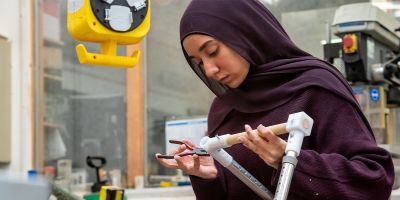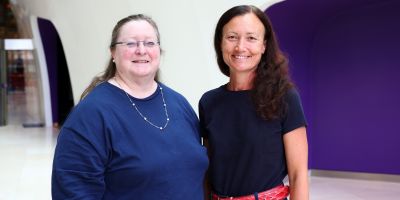Visualising your COVID-19 risk

A new interactive graphic developed by UK researchers and published by The BMJ will help people decide what to do in everyday situations to protect themselves, and others, from COVID-19.
The visualisation shows the way the virus may spread from person to person and is based on information provided by 26 international experts.
Their information was analysed by a group of the UK’s leading scientists involved in COVID-19 research, including Professor Cath Noakes from the School of Civil Engineering at Leeds, and used to develop the visualisation.
It illustrates the risks of catching COVID-19 in different scenarios, and what can be done to reduce those risks, based on the latest available evidence. The graphic allows users to change the parameters of the different scenarios: for example, two people could be talking loudly in a small room with poor ventilation and be less than two metres apart, not wearing face coverings and where there is no physical barrier between them. If one of them is infectious, how could the virus possibly infect the other person – and what is the relative risks of that happening?
The graphic also conveys the uncertainties and the disagreement that exists between experts about how the virus behaves, how it is transmitted, and how the likelihood of transmission can be reduced through personal and social measures.
<div style='position: relative; height: 0; overflow: hidden; padding-bottom: 105%;'><iframe style='position: absolute; top:0; left: 0; width: 100%; height: 105%; max-width:750px; border:none; margin:0px;' src='https://sandpit.bmj.com/graphics/2021/transEmbed/index.html' scrolling='no'>This infographic will display on browsers that support iframes.</iframe></div>
The visualisation, which helps people identify COVID risks. Click on the ‘Next’ button to begin.
Professor Cath Noakes, an expert in the way the virus spreads in buildings and enclosed spaces, said: “The visualisation shows there are several ways that the virus can spread.
“The biggest threat is from the whole range of viral droplets and aerosols that are exhaled when someone is talking or coughing, and these can be breathed in by some nearby. The smallest aerosols can also be carried on the airflow in the room to infect people further away. And of course, people can get the virus on their hands – and then they touch their face and that risks cross infection.
“But as the visualisation shows, relatively simple measures can be taken to reduce the risks.”
The researchers say the visualisation should support policy makers and the public to make informed decisions about how to reduce virus transmission in different contexts, such as how to make a workplace or a public area as safe as it can be while still being open and functional.
Building the visualisation
To create the visualisation, the researchers consulted experts from a range of disciplines and countries, asking them for the scientific information needed to underpin the graphic.
This included the importance of different virus transmission routes during a range of activities in different environments, outdoors and indoors, in different-sized rooms – with or without ventilation.
They also gathered estimates on the importance of different protective measures, such as face coverings and screens, physical distancing, hand hygiene, surface cleaning in reducing transmission. Analysis of the data showed that airborne transmission routes were most important in almost all situations, while face coverings, especially when worn by an infected person as a form of source control, were the most important mitigation measure.
But importantly, all routes were considered to play a part in transmission, and simple measures such as physical distancing, hand washing, and respiratory hygiene, where people cover their mouth and nose when sneezing or coughing, all made a useful contribution.
The researchers found important evidence gaps and differences in opinion amongst experts around several variables, including the role of aerosol transmission; the effects of different kinds of masks on inhaled aerosols; and the effects of face coverings on transfer from hand to eyes, nose, and mouth.
Explore ‘secnarios relevant to you’
Dr Alexandra Freeman, from the Winton Centre for Risk and Evidence Communication at the University of Cambridge, led the development of the visualisation. She said: “Everyone has been keen to know how much difference each possible action we’ve been told about makes, and finally we have been able to gather together enough knowledge from experts from around the world and in a range of fields to answer those questions.
“The graphic is interactive, so that you can explore the scenarios that are most relevant to you, whether it’s because you sing in a choir, or want to know about the risks of eating in a small restaurant. How much difference would it make if you opened the windows, or cleaned the surfaces? Have a look and find out.”
The scientists who developed the visualisation acknowledge some limitations in the project. They say generating robust evidence on the complex and highly contingent routes of COVID-19 virus transmission is not straightforward. But they say they hope their approach “will prove helpful to those faced with the challenge of communicating complex, imprecise, and uncertain evidence in the future”.
Further information
The paper describing how the visualisation was developed – Visualising SARS-CoV-2 transmission routes and mitigations – can be downloaded from The BMJ website.
The top image shows an Adobe stock image of the delta variant of the virus that causes COVID-19.




